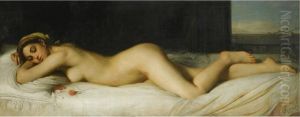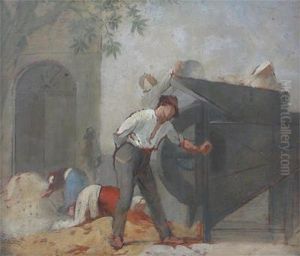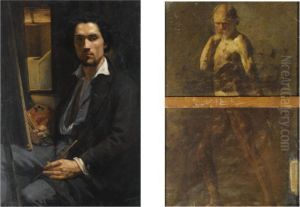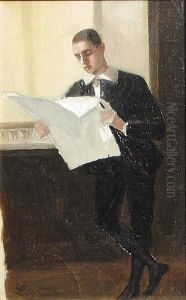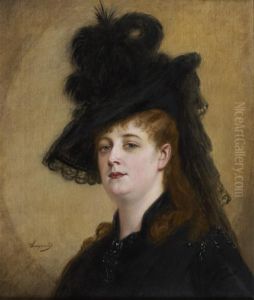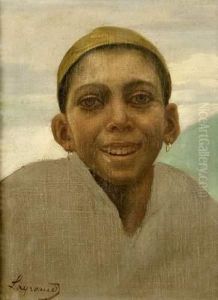Joseph Fortune Layraud Paintings
Joseph Fortune Layraud was a French painter and illustrator born in 1834, known for his detailed and expressive portraitures, religious compositions, and genre scenes. His work, deeply rooted in the academic tradition, showcased his meticulous attention to detail and a profound understanding of color and light, characteristics that defined the 19th-century French academic painting movement.
Layraud's journey into the arts began at an early age, showing a natural inclination towards drawing and painting. He pursued his passion at the École des Beaux-Arts in Paris, where he was under the tutelage of renowned artists of the time. This period was crucial in shaping his artistic direction, embracing the classical training and the emphasis on drawing and painting from life, which were hallmarks of the academy's teachings.
Throughout his career, Layraud garnered attention and acclaim for his work, which was exhibited in several salons and exhibitions in Paris and beyond. His religious paintings, in particular, were celebrated for their emotional depth and spiritual richness, capturing the essence of biblical stories and figures with a sensitivity that resonated with viewers and critics alike. His portraits, on the other hand, were admired for their lifelike representation and psychological depth, offering a glimpse into the character and soul of his subjects.
Despite his success, Joseph Fortune Layraud remained a figure whose work was more appreciated by his contemporaries than by posterity. The turn of the century brought changes in artistic tastes, with movements like Impressionism and Post-Impressionism shifting the focus away from the academic style that Layraud epitomized. Nevertheless, his contributions to French art during the 19th century continue to be recognized by art historians and collectors, who admire his skillful execution and dedication to the traditions of his craft.
Joseph Fortune Layraud passed away in 1912, leaving behind a legacy of artistic achievement that, while perhaps not as widely known as some of his contemporaries, represents a significant chapter in the history of French academic painting. His works, preserved in museums and private collections, continue to be studied and appreciated for their beauty, technique, and historical value.
